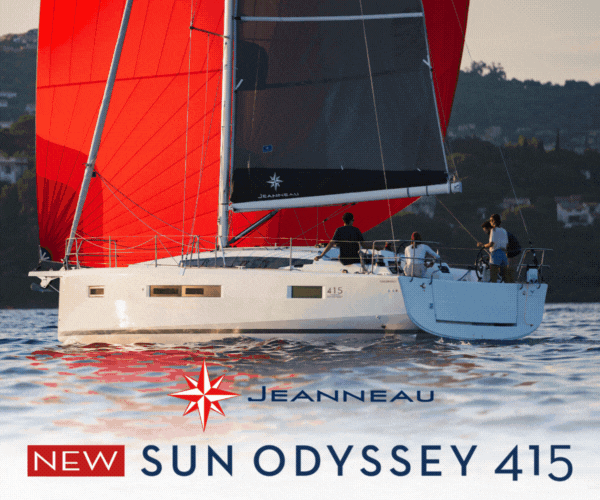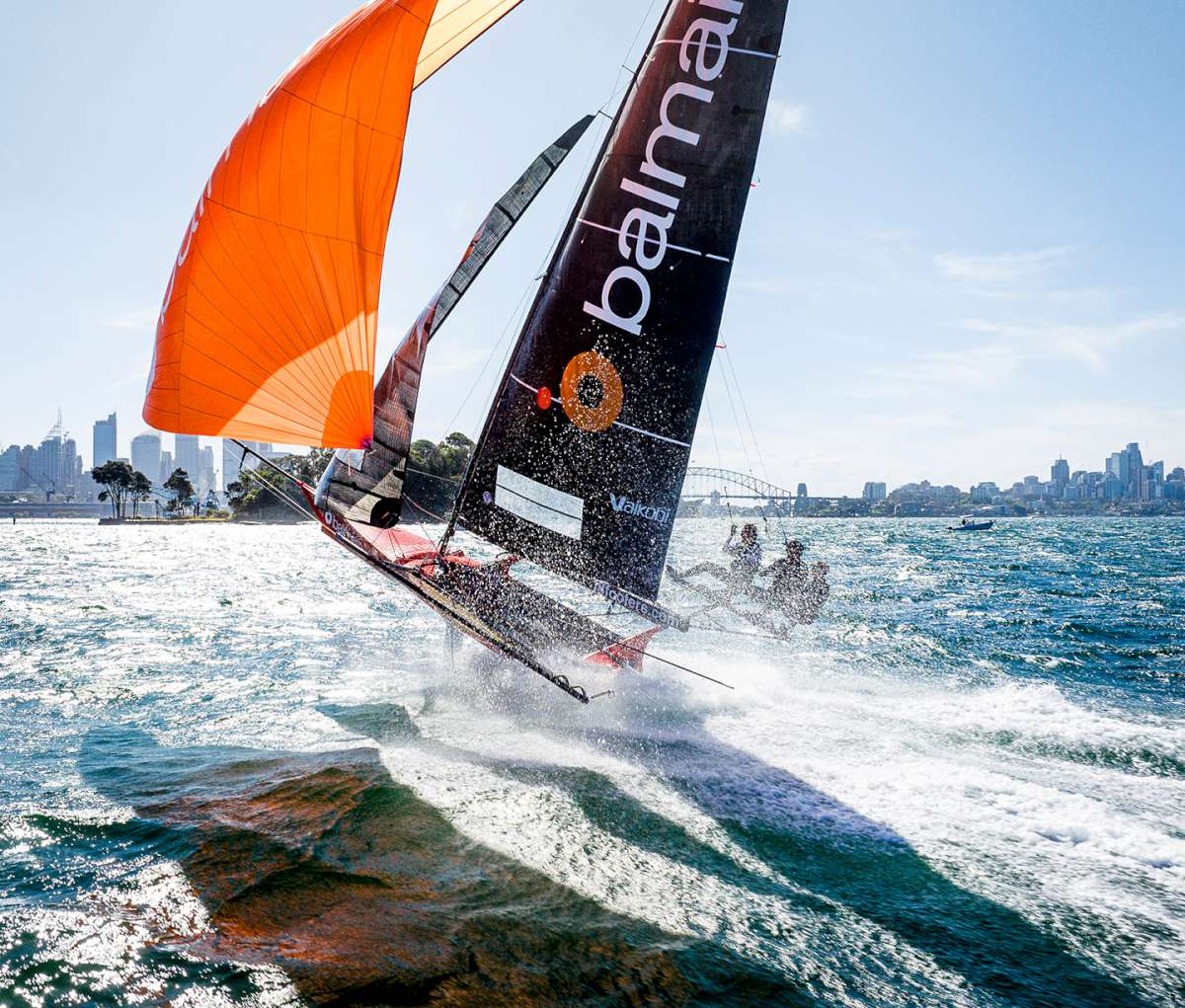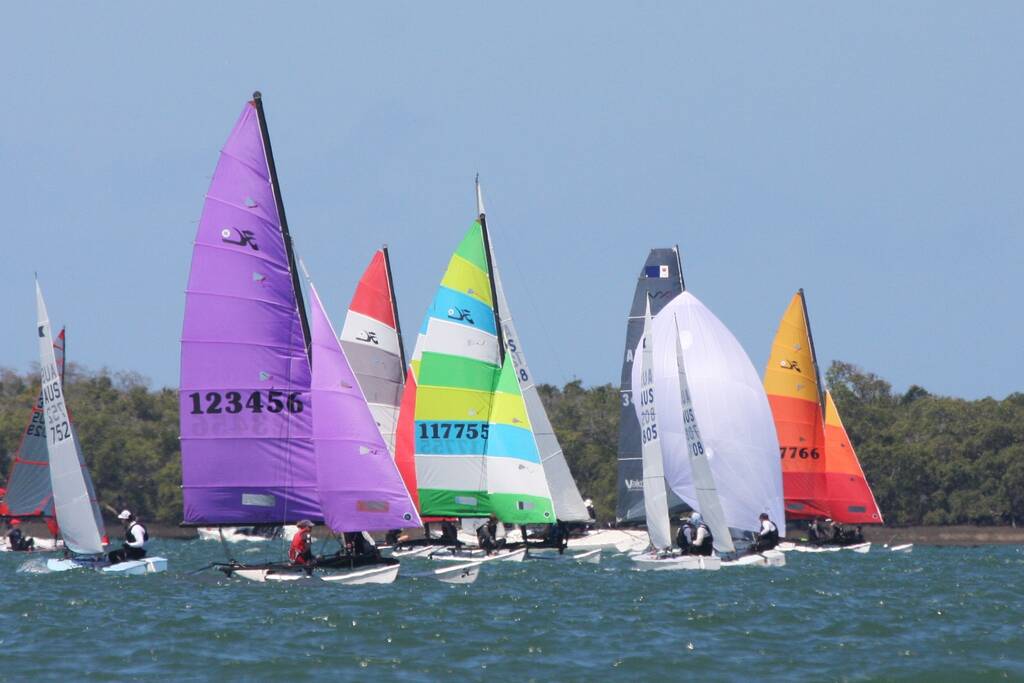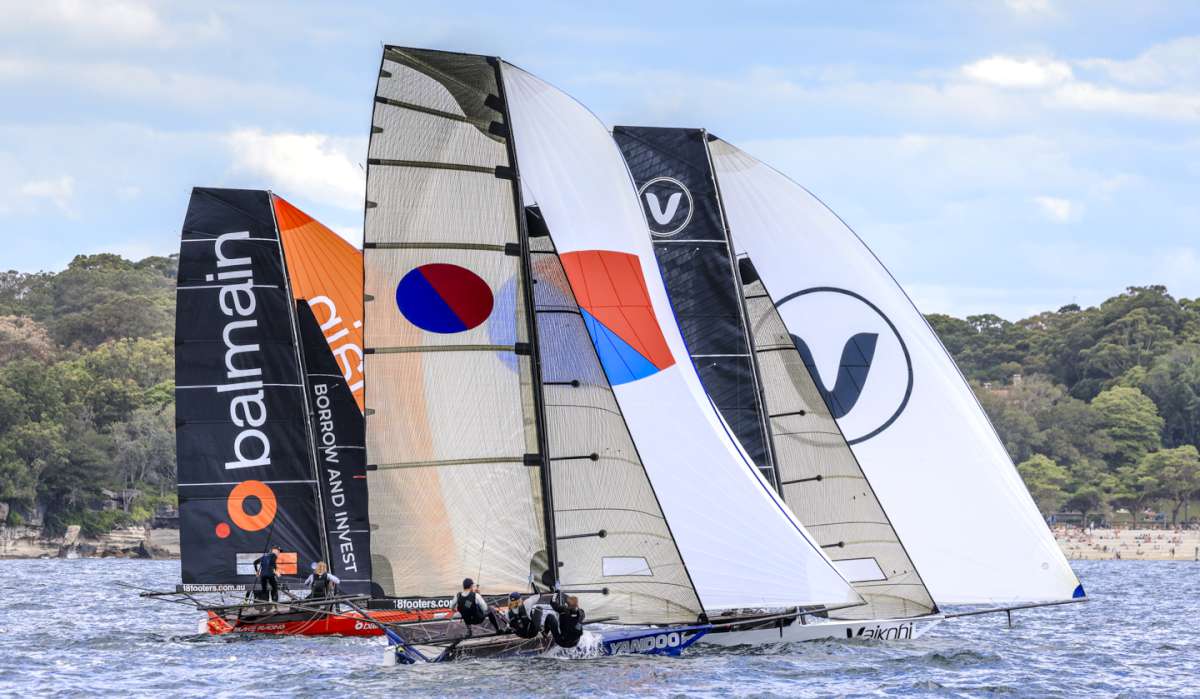The complicated weather patterns of the first week, not least the high proportion of upwind sailing and multiple frontal systems, put to rest any hopes of the Vendée Globe’s 9 days 7 hours and 02 minutes passage record between Les Sables d’Olonne and the Equator being broken.
Nevertheless it was the record holder himself, Alex Thomson (HUGO BOSS), who crossed the equator first into the South Atlantic at 1319hrs UTC, leading the fleet this Wednesday afternoon with around 79 miles in hand over second placed Thomas Ruyant (LinkedOut).
The British skipper’s elapsed time to the Equator on this race is 9 days 23 hours and 59 minutes. His routing since the start on Sunday 8th has been excellent and his passage through the storm Theta, which gave him this lead, has been met with widespread approval among past Vendée Globe winners.
As he passed through the 350 nautical miles convergence zone, Thomson experienced shifts and changes in wind pressure and had a notable slow down last night, but this morning he was well into the SE’ly tradewinds, the bow of his black boat pointing towards Recife, the most easterly corner of Brazil. Today he has been making 18 knots of boatspeed with the wind forward of the beam, likely under full main and J2 headsail.
The weather charts offer some promise for the race leader. The Saint Helena high pressure system which dominates the weather systems in the South Atlantic, is displaced to the east slightly with a low pressure to its west, thus creating a corridor of SE’ly airstream which – as things stand – would allow the leaders to chart a more direct, fast course to the south east.
The scenario is not dissimilar to the last edition when only three boats were able to cut the corner like this, Thomson leading Armel Le Cléac’h at the time.
Regardless of the medium term prospects, the South Atlantic trades usually benefit the leader who is blessed by progressing into the stronger winds first, at reaching angles which open and allow the skipper to ease sheets.
“I think that in general all the new boats will be about the same in terms of speed at these tight reaching angles but the gain to the leader is usually from getting south into the better breeze first and being able to go progressively faster. Alex has been quiet today, I am sure getting as much rest as he can after the Doldrums which were quite kind to him. He had a bit of a slow down in the night but all is good with him,” Ross Daniel, Technical Director at the Alex Thomson Racing Team commented this afternoon.
The seemingly omnipresent Jean Le Cam (Yes We Cam) – who, since 2004 until the last edition held the record to the Equator, was third this morning but dropped to fourth today and is now 17 miles behind third placed Charlie Dalin (Apivia). Le Cam will have been saddened by the retirement of Nicolas Troussel from the race course. They are Finisterian friends who raced the Transat Jacques Vabre together last year while Troussel waited for his new Juan K designed IMOCA CORUM L’Épargne to be finished. Racing Le Cam’s boat in the colours of CORUM, the budget from the French asset and savings management brand paid for new sails for Le Cam’s 2007 Farr design.
Troussel is not expected to reach the Cape Verde islands before Friday. His loss to the race is significant, not least as much was expected from him and his new boat, but at 44-years-old this was finally his chance to match the exploits of the close sailing buddies of his youth, Armel Le Cléac’h and Jérémie Beyou.
Twenty years ago this talented trio trained and sailed together on Morlaix Bay under the guidance of Hugues Imbert, director of the Carantec club and Bruno Jourdren. Beyou, Le Cléac’h, Troussel, three teenagers who went on to win six from ten La Solitaire du Figaros, two each.
Way back, before the 2016 race, Beyou said, “It would be fantastic if Nico made it too in 2016, so we would all back together again.”
This Vendée Globe should have been Troussel’s time but lady Vendée luck has kicked him, and his teenage friend Beyou, in the teeth. It will certainly take the Breton sailor some time to get over his disappointment.
The Doldrums have been kind so far. People may remember Charal being stuck here for three days in the 2019 Transat Jacques Vabre, which led to the boat missing out on victory in Brazil. With the Doldrums, you never know what is going to happen and a change may just be a cloud away.
The meteorologist, Jean-Yves Bernot, explains the situation very well. “Forecasting where a squall will develop in the Doldrums is a bit like guessing where the first spurt of steam will come out of a saucepan.”
The group behind the British HUGO BOSS sailor is speeding into the lion’s den hoping that they will not be swallowed up.
“I’m a few miles from the Doldrums. Things were moving along quickly during the night and I get the feeling the Doldrums won’t be slowing me down that much either. It looks like a simple convergence cloud between the SE’ly and NE’ly trade winds. Looking at it optimistically, I think I may get out of here in a few hours,” said a hopeful Sébastien Simon aboard his foiler, ARKÉA PAPREC, averaging twenty knots this lunchtime.
Damien Seguin / Groupe Alpicil: “It's great, we've had a stunning sunrise. There are around twenty knots of wind. I'm moving along at 16/18 knots on a rather flat sea, straight towards the Doldrums and making the most of these rather exceptional sailing conditions.
“The last few days have allowed me to rest a little. I was able to take a long nap for the first time and I deliberately didn't set an alarm clock and slept for three hours. For the next days, I wore an alarm clock because even in the middle of nowhere, we always come across cargo ships.
“Honestly the last few days have just been a matter of going straight ahead, I wasn’t focusing on the others but am sure we are all going through the same, having to get through the Doldrums. I am surrounded by the foiling boats which should be far ahead, and four daggerboard boats (Jean, Benjamin, Maxime and Romain). We're going to get a bit carried away!
“I'm going to start looking at the course down the Atlantic, which doesn't look that simple. The crossing of the Doldrums should be simpler than last year with Yoann (Richomme) on the Transat Jacques Vabre (which was not an easy one), there should be a way to do a nice crossing this time and hopefully I can make it up with the Doldrums!”
Charlie Dalin, Apivia: “Jean can't be very far away. Ahead, it looks as if they have already headed to the right. I have the impression that Alex (Thomson) seems to be going well through the Doldrums. I think he might have entered the Doldrums at a more favourable moment than me. It’s generally more active at night than during the day… Even if we have all slowed down a bit in the same zone. We'll tally up when we’re on the way out!
“My most useful tool in the Doldrums is the infrared images. They allow you to see the cloud activity, where the squalls are, their size, their strength. I can tell that the way out is still a while away now. I still have 150 miles to go. And that may take some time. Finding the right direction is not easy.
“A little lesson on the Southern hemisphere: weather patterns work the other way around. Clockwise for depressions and anticlockwise for anticyclones. There is also an asymmetry in terms of temperature variation: as you go down the Atlantic, from North to South, the temperature (of the water and the air) gradually increases. Whereas generally, in the South Atlantic, the temperature changes more abruptly: you can rapidly go from summer to winter, in 24 / 48 hours.
“On the Vendée Globe, you almost pass through eight seasons altogether: winter, summer, autumn, winter, spring, summer, autumn, winter! It's hot, but it's OK. It's only 28 degrees in the boat. 27 in the cockpit. I don't suffer too much from the heat. I have a small fan and my other anti-heat weapon: a small rechargeable spray mister. It's basic but it works quite well.
“I really like the trade winds. I'm in my T-shirt and shorts day and night, so there's no question about what to wear. I'm enjoying it all the more as I’ll have to change to another outfit in a few days”.
Yannick Bestaven / Master CoQ IV: “I entered the Doldrums this morning, with some clouds beginning to cover overhead but it's been windy so far, so it's pretty good. We'll see today if it lasts.
“It's difficult to avoid the squalls, the winds are never as predicted on the forecasts and you never seem to have the right sail at the right time. I don't think my speed is very good compared to the boats around me, that is Boris (Herrmann), Sam (Davies) and Louis (Burton), but I'm trying to do my best, I placed myself further east than the others, because I think it’s best to be further east coming out of the Doldrums. According to the forecast, we should pass through it easily, but I never have too much confidence in the weather forecast for this zone.
“I don't really have a sense of what day it is anymore. One of my fears is that I will find it all too long, we'll see after a month but for the moment I don't really notice the days passing.
“It's a long road ahead, I don’t want to get carried away but for the moment I'm happy and my objective is to keep within the group I'm currently in.”
Jérémie Beyou, Charal: “The night is pretty quiet, there isn’t much wind. I'm not progressing very fast. I'm going between 8 and 20 knots, it's very unstable. It's a bit weird because I'm used to having other boats around not too far away from me, so I don't know if you can call it racing, but it's good to be back at sea.
“I always have one eye on the boat. But everything looks OK at the moment. I’m a bit on tenterhooks. I've tried to move further south and not go too fast towards the front so as not to get too much wind. At daybreak the wind should start to strengthen and shift around. After that I’ll have to make a tack change.
“Last night, I spoke with Fabrice Amedeo, he came to check up on me because he's been more or less through the same thing as me and it's not easy, neither for him nor for me. Apart from the contact with Fabrice and also with the freighters and the fishermen to work out our trajectories, I didn't talk too much last night. I have to get back into the swing of things and do my own thing.
“All the messages of support, all the people on the quay at the start, it’s crazy. You can really see how significant this race is. It's great. Now it's up to me to do my part on my own. I feel the weight of that quite heavily upon me, but I’ll just have to find the right rhythm and my own goals in the coming days and weeks.
“All the enthusiasm for the race does help carry me through, it has helped me get back on track, because I’m not going to lie, having had to stop and start again has been running on my mind. But it also puts the pressure on. Once again, here we go, I'm off on my way. I hope that people following the race won't be disappointed with the way I sail, but at some point, I'll have to shift focus to how I really want to sail this race. It's in my character not to want to disappoint, to want to do things right. I’ll have to find another frame of mind and do things a bit differently. It's a certain kind of introspection.”
Isabelle Joshke, MACSF: “Right now, these days are a gift because I know that later it won’t be so easy. These are the first two or three calm days of my trip round the world, so making the most of them.
“I played it safe on the outset of the race because I did not want to go right into the storm coming towards us off the coast of Portugal. My objective is above all to finish and I did not want to have a problem right from the outset of the Vendee Globe, which has marred me on the start of other transatlantic races.
“Since then, I am on the attack and I have lot a lot of ground to make up. Like many of my competitors, I have had to stop and repair things; lower the main sail twice, go up the mast to the height of the Solent sail to fix a hook. So, I have had quite a few jobs to do which have not helped me with keeping up the boat speed. You might not see it now because conditions are calmer, but I am working flat out to go fast now.
“It is a compromise with trying to go fast and also to preserve my boat. I found myself in this dilemma right at the start of my race. It is not easy to manage. I try and remember that the real priority is to get to complete this race. I really want to see Cape Horn.
“It is the first time I compete on the Vendée Globe and all my references have been lost. It is as if all my bearings have been changed. I am looking ahead to the Southern Ocean and thinking that the boat needs to be in perfect strong conditions, that the weather will turn cold and the seas freezing etc. I am trying to take it all in and also, it is a mental test and I know I am not the only one, but it is a big test, and I am not always sure about what to expect.
“In the next 24/48 hours will enter the doldrums and then will work on the strategy to re-join the trade winds on the 40s. You then have the big question as to whether there will be the Saint Helena High to cut across or whether it needs to be rounded and what the risks are.
“Then progressively I know that the weather will change, it will cool down and we will get into a different environment. I will also be entering unchartered waters for me. The furthest south I have been is Rio, so there will be lots of new things for me, which I find both exciting but also a little apprehensive.”























